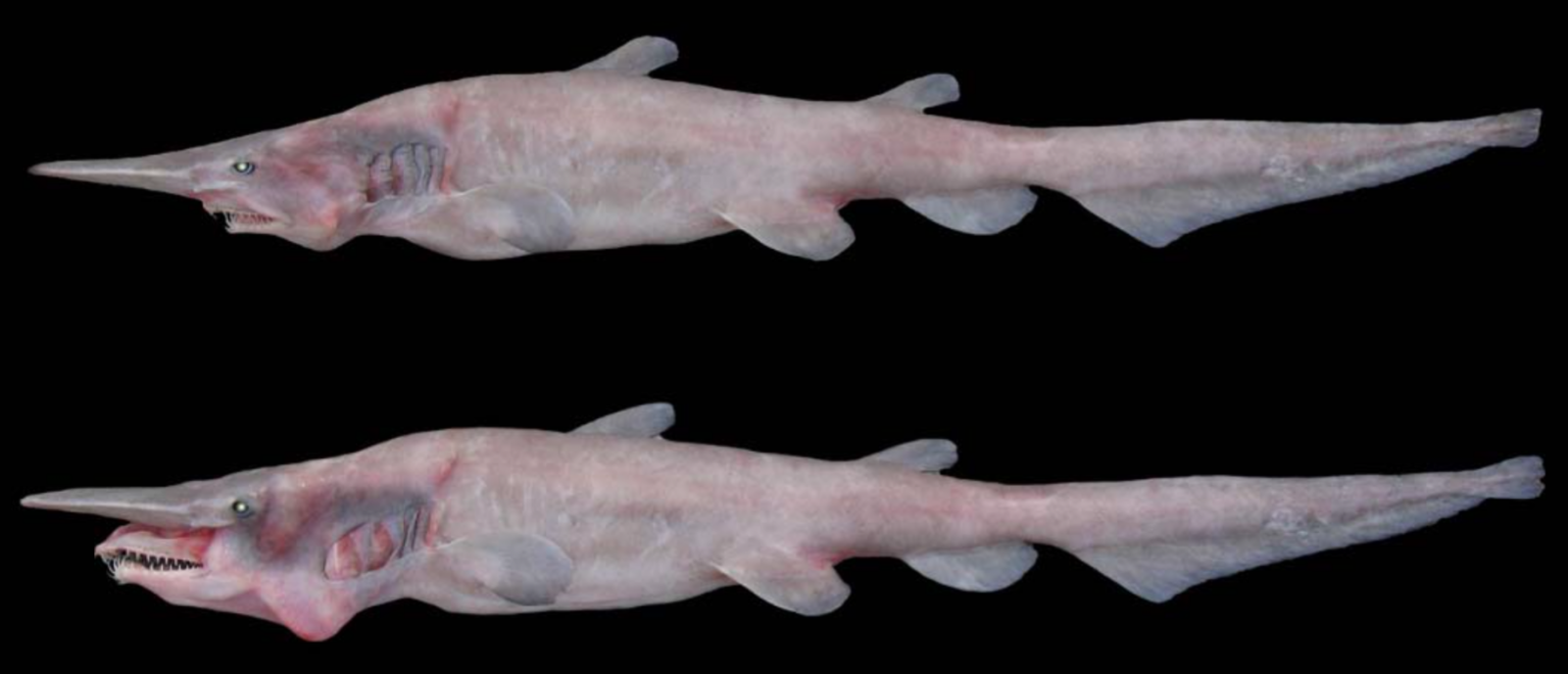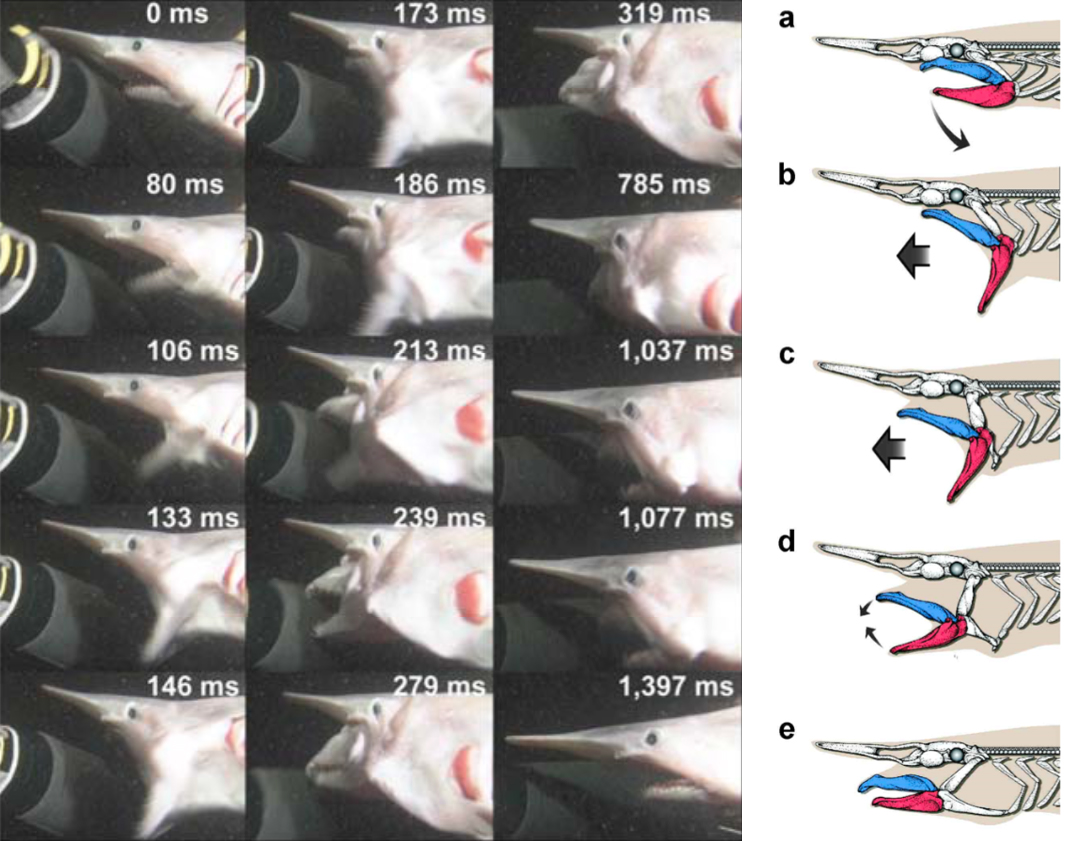Mystery behind goblin sharks' weird protruding jaws solved after over a century
Being able to thrust jaw forward quickly gives feeding advantage to deep sea creature discovered in 1898.
A century-old mystery about goblin sharks has finally been solved, with scientists working out the reason for their bizarre protruding jaws. Often dubbed a "living fossil" as it has hardly evolved over 125 million years, very little is known about the species and why it looks the way it does. Goblin sharks, first discovered in 1898 by Japanese fishermen, are one of the most alien-looking creatures in the sea.
They have long snouts that hides a mouth full of needle-like teeth. They have pinkish-red skin when taken out of water, but it is thought they would appear black at the depths at which they live – between 300 and 1,300metres.
One of the most unusual features is the jaw mechanism. When it closes its mouth, two ligaments are stretched so when it opens, tension is released and the jaw is thrusted forwards.
In a study published in the journal Scientific Reports, a team led by Kazuhiro Nakaya of Hokkaido University studied videos of two goblin sharks in the sea to try to work out their "extraordinary biting process".
They looked at five cases where the sharks caught prey, showing how they would swing their lower jaw downwards and backwards to create a "huge gape".


It would then protrude the jaws forward at a speed of three metres per second. They would be pushed forwards up to 9.4% of the total length of the shark, "which is by far the fastest and greatest jaw protrusion among sharks," they wrote.
This slingshot feeding process is believed to have evolved so the shark could survive in such deep environments. Like many deep sea animals, the goblin shark swims slowly – having an extremely fast jaw mechanism would compensate for this.
"The rapid and extensive jaw protrusion of the goblin shark may compensate for its apparent lack of ability for fast and sustained swimming to pursue prey," the team wrote. "The jaw protrusion of the goblin shark will serve the species to expand the accessible distance to the prey, and enable it to capture the faster swimming prey, allowing it to seize elusive prey. It's very recurved teeth would also prevent the prey escape once seized."
© Copyright IBTimes 2025. All rights reserved.






















